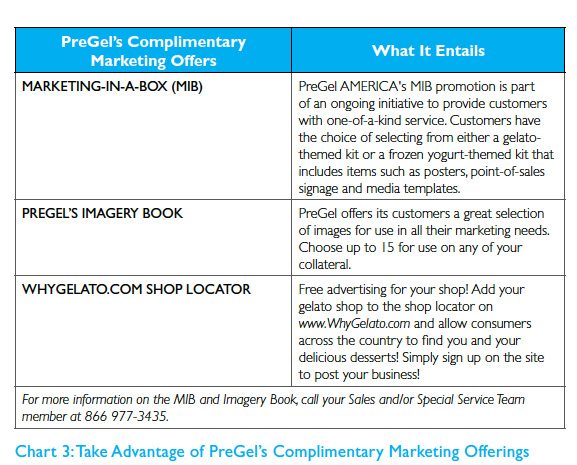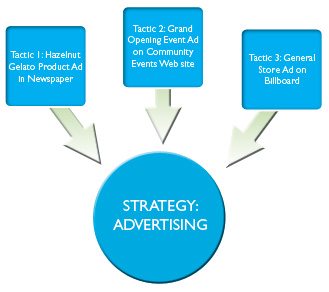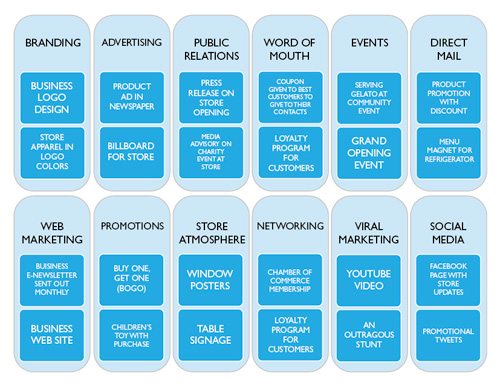
Part 5 – Marketing, a Critical but Often Sparse Component in Small Businesses
Have you ever heard the expression, “You have to spend money to make money?” Aside from the expense of your location, machinery and products, it is absolutely necessary that a part of your budget be put towards marketing your business. Marketing is defined by the American Marketing Association as “the activity, set of institutions, and processes for creating, communicating, delivering, and exchanging offerings that have value for customers and society at large,” and is critical to your entire operation as it’s the first step to generating a sale.
While critical, it’s no secret the many components and facets of marketing can be overwhelming and are constantly evolving. Every day, new articles, blogs and books are released promising the perfect marketing plan and advice, and while immensely helpful, the best advice is to start with the basics and apply what fits for your business at your own pace.
Defining Your Budget
The first objection I often hear about marketing is that it costs too much! Every business should set aside a predetermined percentage of their budget for marketing. Marketing budgets usually range from 2 percent to15 percent of gross sales, depending on the business size and industry. According to Business Week, higher percentages are usually spent by young businesses as they build their brand. Look at the whole financial picture of your business and determine what works for you, and also be prepared to adjust that number as sales increase and decrease. There are many online resources to help you calculate what to allocate to marketing such as www.adbudgetcalculator.com.
Understand Your Target Audience
Knowing your audience continues to be a pivotal part of this series and truly is one of the major elements of starting a business. Once you have defined the audience, you need to research how to get your message to them, and this comes from understanding who they are. Is your audience Web-savvy? Are they businesspeople on the run or college students in and out of class all day? Is your town so small that things passed on via word of mouth spread quicker than a moth to a flame, or are neighborhoods spread out so far that communication is generally achieved via mail and/or billboard? Digging beyond the demographics will help you get into the minds of your customers much quicker and discover how to reach them. Neighboring shops and businesses can also usually assist in your research since they have most likely tried several marketing tactics and have insights as to what campaigns worked. Don’t be discouraged by less-than-pleasant stories from peers; what works for one business doesn’t define what will or won’t work for another.
Review Viable Goals and Strategies
Marketing strategies are plans or a series of plans for how a business intends to achieve its goals and get results.1 Define your goals: Do you want to gain 15 new customers a week, receive 100 new hits on your Web site or have 150 new customers attend your grand opening? Identify what would realistically mean success for you and your business with regard to marketing, and then choose the strategies to accomplish this. I specify “strategies” because today’s marketer has to penetrate multiple media outlets for optimal visibility. An integrated marketing approach is the only way to reach the largest percent of your audience, which receives messages in a number of customized ways.
The major strategies employed by businesses generally fall under one of these main categories:
- Branding – also known as identity, this strategy utilizes sending consistent messaging to familiarize the audience with your company and products
- Advertising – the placement of announcements and persuasive messages in time or space that is purchased2
- Public Relations – promote and inform a specified audience of a company and its initiatives through nonpaid, credible media
- Word of Mouth/Customer Loyalty – oldest and most effective marketing tool, customers pass along information to their audiences about your business
- Events – a live, in-person strategy geared toward a specified audience
- Direct Mail – a strategy that relies heavily on building a good customer and prospect list; once the list is prepared, the message is delivered by either telephone or mail
- Web Marketing – a large piece of the marketing pie covering the strategies and tactics that take place on the Internet – Web site, e-mail blasts, banner ads, SEO, blogging, forums, online directories, etc.
- Promotions – limited-time offers a company makes to stimulate the market, geared toward bringing back existing business and/or new business to highlight a product/service
- Store Atmosphere/Window – atmosphere is one of the main forms of communication – it tells the story of what kind of business you are, positions you and your company’s character, and reinforces the relationship with the client3
- Networking – a rudimentary marketing strategy – relying on the people you know in the industry, community and so forth to promote your business through good relations
- Viral Marketing – marketing phenomenon that facilitates and encourages people to pass along a marketing message; nicknamed viral because the number of people exposed to a message mimics the process of passing a virus or disease from one person to another4
Many of these major strategies are already considered integrated as they often coexist – for example, a promotion can be delivered with social media, direct mail, an e-mail blast and/or an advertisement. Social media and viral marketing tend to go hand in hand; social networks can to deliver a message that can instantaneously hit the masses. Once you understand the overlaying strategies, the next step is to determine the tactics within those strategies to employ.
Tactics – Where the Good, Bad and Ugly Are Decided
The difference between marketing tactics and strategies often confuse people, but the easiest way to remember the difference is that strategies are the skeleton of a marketing plan and the tactics are the muscles and guts. A tactic is a short-term action to implement a broader strategy. For example, when you decide to allocate your marketing dollars to the strategy of advertising, the tactic is an ad campaign in a specific medium. Every ad in different mediums represents a new tactic (See Chart 1). The important thing to always remember is that a strategy does not fail if one tactic fails – it could just mean that the particular tactic employed was not successful and needs to be reworked.
While tactics may be short-term, they need to be well thought-out and executed to determine what works and what doesn’t. Chart 2 shows a variety of tactics within strategies.
Measure Your Results
Once you have initiated a tactic, an evaluation of its success is required to understand it, and that is generally done by measuring your return on investment (ROI). Measuring marketing initiatives can prove to be difficult as it’s not all quantitative data and some strategies are long-term investments that may not show return for quite some time. First, ROI will be unique to every strategy and tactic you employ. Understand ROI may not always work for specific tactics, especially when employing an integrated media plan, as they all affect one another. For example, let’s say you send a direct mail campaign; one customer comes in and becomes a loyal customer, purchasing your products every week, and creates 20 new and loyal customers for you through word of mouth – a great success on the return. However, let’s say the direct mail brings in 20 customers as well, but for some reason they only come once. By sheer quantity, you might measure the latter as a success by the number of mail responses, when in reality the former is truly the success, revealing that having a good, loyal customer in this case will yield better results. Overall, collect the quantitative data you can, i.e., Web visitors, e-mail opens, store visitors, and engage your customers by asking things such as, “How did you hear about us?” and, “How would you like us to tell you about promotions?” Having the hard data and direct customer feedback will help you assess existing plans and shape new ones.

Developing Your Marketing Further
Marketing is an ongoing initiative that takes time and commitment, and is not something that business owners should ignore. If you aren’t getting your message to your audience, there’s a good chance your business isn’t doing as well as it could. Yes, marketing is time-consuming and can be costly, but there are creative ways to maneuver through it, and the benefit generally outweighs the expense. Yet, like anything, if you are going to do it, commit to it. If you are cautious, take advantage of the opportunities out there to market for free, and test strategies and tactics if possible before making the push and investment. Many companies offer free or trial services to test before you commit. Companies such as www.letseat.at and www.weebly.com offer free Web site templates, Vertical Response and iContact give free e-blast trials, and if direct mail services seem too pricey, start with flyers distributed in a neighborhood by your staff. PreGel also offers its customers marketing assistance including free imagery and a free marketing kit (See Chart 3). Don’t be afraid totake the next step in turning your passion into a reality – marketing is what will bring the customers!
Tune into the spring issue for Part 6 of our series, where we will tackle the final necessities needed to start a business.
Continue Reading Part 6 of “Turning your Passion into a Reality”
Resources:
1, 2, 4 The American Marketing Association’s Web site is dedicated to providing marketing solutions and resources to today’s marketer (www.marketingpower.com)
3 Lobrano, Robert (2005). Il gelato: come venderlo meglio.


